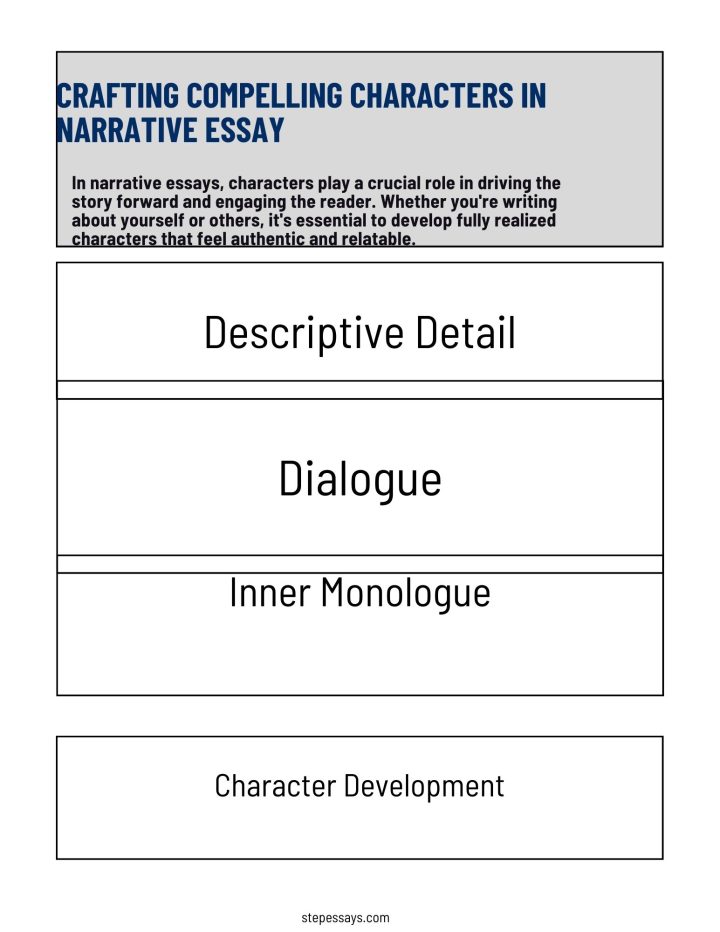Introduction:
Narrative essays offer writers a unique opportunity to express themselves creatively while engaging readers with compelling storytelling. Unlike other types of essays, narrative essays allow for personal experiences, anecdotes, and emotions to take center stage. Crafting an effective narrative essay requires careful planning, attention to detail, and a deep understanding of storytelling techniques. In this guide, we will explore the essential elements of writing a captivating narrative essay, from selecting a topic to structuring your story and polishing your prose.

Narrative essay
Choosing a Topic:
Choosing a compelling topic is the cornerstone of writing an interesting narrative essay paper. When selecting a topic, consider experiences or events that hold personal significance, evoke strong emotions, or offer valuable insights. Reflect on moments of triumph, adversity, growth, or self-discovery, as these often provide rich material for engaging narratives. Alternatively, explore fictional scenarios that ignite your imagination and allow for creative storytelling. Look for themes that resonate universally, such as love, loss, friendship, or overcoming obstacles, as they can draw readers in and make your narrative relatable. Additionally, consider the audience you intend to reach and choose a topic that will resonate with them, whether it’s a humorous anecdote, a heartwarming tale, or a thought-provoking reflection. By carefully selecting a topic that inspires you and aligns with your audience’s interests, you can set the stage for an engaging and memorable narrative essay paper.
Structuring Your Narrative essay:
Structuring your narrative essay is essential to ensure clarity, coherence, and reader engagement. Begin with a compelling introduction that grabs the reader’s attention and introduces the central theme or conflict of your narrative. Establish the setting, characters, and context to provide a solid foundation for your story. In the body paragraphs, organize your narrative chronologically or thematically, guiding readers through the sequence of events or exploring different facets of your topic. Use descriptive language, vivid imagery, and sensory details to immerse readers in the experience and bring your story to life. Transition smoothly between paragraphs to maintain the flow of your narrative and keep readers engaged. Finally, craft a conclusion that provides closure by reflecting on the significance of your story, summarizing key points, and leaving readers with a lasting impression or takeaway message. By structuring your narrative essay effectively, you can effectively convey your story and captivate your audience from beginning to end.
Introduction:
Writing an interesting narrative essay paper requires a blend of storytelling prowess, creativity, and a keen understanding of structure. Unlike other academic essays, a narrative essay allows the writer to express personal experiences or fictional tales in a compelling manner. To captivate the reader’s attention, start with a captivating hook that intrigues and sets the tone for your story. Establish a clear purpose or message you intend to convey through your narrative, whether it’s a lesson learned, a personal reflection, or an entertaining anecdote. Crafting vivid descriptions, dynamic characters, and engaging dialogue enhances the richness of your narrative, immersing readers into the experience. Additionally, pay careful attention to the chronological order of events, ensuring a smooth flow from beginning to end. Lastly, infuse your narrative with emotions, sensory details, and reflective insights to leave a lasting impact on your audience. In this guide, we’ll explore the essential techniques and strategies to help you master the art of writing an intriguing narrative essay paper
Body:
Conclusion:
Crafting Compelling Characters in Narrative essay:

Narrative essay paper
In narrative essays, characters play a crucial role in driving the story forward and engaging the reader. Whether you’re writing about yourself or others, it’s essential to develop fully realized characters that feel authentic and relatable. Consider the following tips for crafting compelling characters:
Descriptive Detail:
Dialogue:
Setting and atmosphere are essential elements of any narrative essay, helping to establish the mood, tone, and context for the story. Whether your narrative takes place in a bustling city, a quiet countryside, or the depths of your own mind, it’s crucial to create a sense of place that immerses the reader in the narrative. Consider the following techniques for bringing your setting to life:
- Sensory Detail: Appeal to the reader’s senses by describing sights, sounds, smells, tastes, and textures associated with the setting.
- Mood and Tone: Use descriptive language and imagery to evoke the desired mood or tone for your narrative, whether it’s lighthearted and whimsical or dark and brooding.
- Symbolism: Incorporate symbolic elements into your setting to enhance the thematic depth of your narrative and add layers of meaning.
- Consistency: Ensure that your setting remains consistent throughout the narrative, avoiding jarring shifts or inconsistencies that could disrupt the reader’s immersion.
Employing Narrative Techniques:
Narrative essays offer writers a wide range of techniques for engaging readers and conveying meaning. From foreshadowing and flashback to metaphor and imagery, mastering these techniques can elevate your narrative from ordinary to extraordinary. Consider the following narrative techniques and how they might enhance your storytelling.
Foreshadowing:
Foreshadowing is a powerful narrative technique that writers employ to create anticipation and intrigue within their storytelling. By subtly hinting at future events or outcomes earlier in the narrative, authors can engage readers’ curiosity and encourage them to look deeper into the story. Foreshadowing can take various forms, such as symbolic imagery, subtle hints in dialogue, or the introduction of recurring motifs or themes. When effectively executed, foreshadowing not only heightens suspense but also enriches the reader’s understanding of the narrative by creating a sense of coherence and inevitability. It allows for a deeper exploration of character motivations, thematic elements, and plot developments, ultimately contributing to a more immersive and satisfying reading experience. As writers master the art of foreshadowing, they can craft narratives that resonate with readers long after they’ve turned the final page.
Flashback:
Symbolism:
Imagery:
Metaphor and Simile:
Narrative Voice:
Revising and Polishing Your Narrative essay:

Revising and Polishing
Once you’ve drafted your narrative essay, it’s essential to revise and polish your work to ensure clarity, coherence, and impact. Consider the following tips for revising and polishing your essay:
Clarify Your Thesis:
When revising and polishing your narrative essay, it’s essential to clarify your thesis to ensure coherence and purpose throughout your writing. Your thesis statement should encapsulate the central message or theme of your narrative, serving as a guiding beacon for both you as the writer and your readers. Take the time to revisit your thesis and ensure that it accurately reflects the main idea you’re conveying through your story. Consider whether your narrative effectively supports and reinforces your thesis, and make adjustments as necessary to strengthen the connection between your storytelling and your overarching message. By clarifying your thesis during the revision process, you can enhance the clarity and impact of your narrative essay, ensuring that every element of your writing works together harmoniously to deliver a compelling and cohesive narrative.
Check for Consistency:
Edit for Clarity:
When revising and polishing your narrative essay, it’s essential to edit for clarity to ensure that your message is conveyed effectively to your audience. Review each sentence and paragraph with a critical eye, aiming to eliminate any ambiguity or confusion in your writing. Simplify complex sentences, clarify unclear phrases, and remove any unnecessary jargon or convoluted language that might hinder comprehension. Pay attention to transitions between ideas and ensure that each paragraph flows logically into the next, guiding readers effortlessly through your narrative. Additionally, consider the perspective of your audience and strive to provide sufficient context and explanation for any unfamiliar concepts or references. By editing for clarity, you can enhance the readability and coherence of your narrative essay, making it more engaging and impactful for your readers.
Proofread Carefully:
Proofreading carefully is an indispensable step in revising and polishing your narrative essay. It involves thorough reviewing your writing to detect and correct errors in grammar, punctuation, spelling, and syntax. Take the time to read through your essay slowly and attentively, preferably multiple times, to ensure that every sentence is free from mistakes and flows smoothly. Pay close attention to commonly overlooked errors such as homophones, missing or misplaced punctuation marks, and inconsistent verb tense usage. Additionally, consider using tools like spell checkers and grammar checkers to catch any lingering errors that may have escaped your notice. By proofreading carefully, you can elevate the overall quality of your narrative essay, ensuring that it is polished and professional in its presentation.


